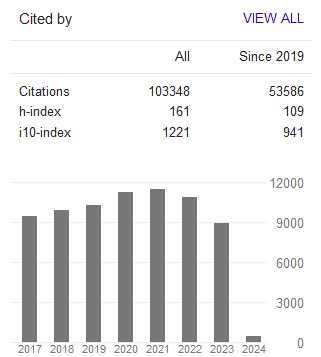The Effect of the Liquidity Management on Profitability in the Jordanian Commercial Banks
- Ali Sulieman Alshatti
Abstract
This research seeks to investigate the effect of the liquidity management on profitability in the Jordanian commercial banks during the time period (2005–2012). Thirteen banks have been chosen to express on the whole Jordanian commercial banks. The liquidity indicators are investment ratio, Quick ratio, capital ratio, net credit facilities/ total assets and liquid assets ratio, while return on equity (ROE) and return on assets (ROA) were the proxies for profitability. Augmented Dickey Fuller (ADF) stationary test model was used to test for a unit root in a time series of the research variables and then testing hypothesis by using regression analysis. The empirical results show that a positive effect of the increase in the quick ratio and the investment ratio of the available funds on the profitability, while there is a negative effect of the capital ratio and the liquid assets ratio on the profitability of the Jordanian commercial banks. The researcher recommends that there is a need for an optimum utilization of the available liquidity in a various aspects of investment in order to increase the banks' profitability, and banks should adopt a general framework of liquidity management to assure sufficient liquidity for executing their operations efficiently, and they should initiate an analytical study of the evolution rates of liquidity and their ability to achieve a balance between sources and uses of funds.- Full Text:
 PDF
PDF
- DOI:10.5539/ijbm.v10n1p62
Journal Metrics
Google-based Impact Factor (2023): 0.86
h-index(2023): 152
i10-index(2023): 1168

Index
- Academic Journals Database
- AIDEA list (Italian Academy of Business Administration)
- ANVUR (Italian National Agency for the Evaluation of Universities and Research Institutes)
- Berkeley Library
- CNKI Scholar
- COPAC
- EBSCOhost
- Electronic Journals Library
- Elektronische Zeitschriftenbibliothek (EZB)
- EuroPub Database
- Excellence in Research for Australia (ERA)
- Genamics JournalSeek
- GETIT@YALE (Yale University Library)
- IBZ Online
- JournalTOCs
- Library and Archives Canada
- LOCKSS
- MIAR
- National Library of Australia
- Norwegian Centre for Research Data (NSD)
- PKP Open Archives Harvester
- Publons
- Qualis/CAPES
- RePEc
- ROAD
- Scilit
- SHERPA/RoMEO
- Standard Periodical Directory
- Universe Digital Library
- UoS Library
- WorldCat
- ZBW-German National Library of Economics
Contact
- Stephen LeeEditorial Assistant
- ijbm@ccsenet.org
